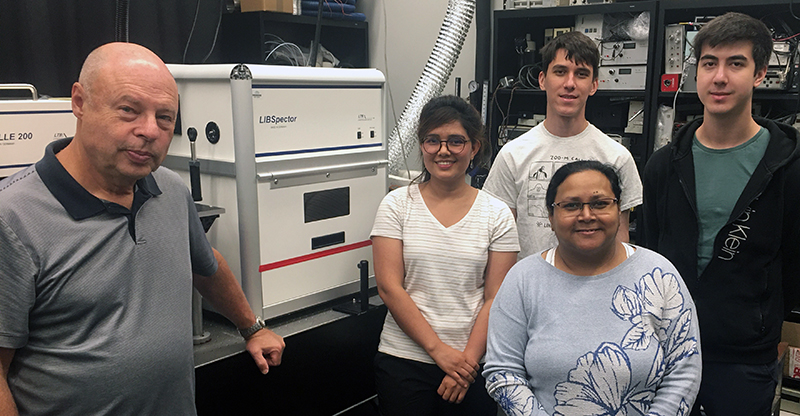Our hypothesis is the development of a novel f-LIBS/LEAFS (femto- laser induced breakdown spectroscopy/laser excited atomic fluorescence spectroscopy) and mid-IR frequency comb “Optical Nose” systems will enable ultrasensitive and rapid detection of Cd, Mn, As, and biomarkers associated with exposure to these metals.

Aim 1: Develop an fs-LIBS/LEAFS platform
Laser-induced breakdown spectroscopy is a straightforward and versatile spectroscopic technique based on the analysis of the spectral emission from laser-induced plasmas.
LIBS has the far-reaching capability to provide rapid, in situ, multielement detection of any material - solid, liquid or gas. The field of LIBS has been rapidly maturing as a consequence of interest in LIBS for a road spectrum of applications and the recent development of LIBS analytical systems by the commercial sector.
We aim to to document and identify the behaviors of macro samples of various heavy metals under laser agitation.
Aim 2: We are developing a new f-LIBS/LEAFS platform in conjunction with confocal microscopy
Using our current experiemental setup, we aim to detect heavy metals. This detection is done using Sophi software to measure data and an Echelle spectrometer and CCD Camera to measure emission spectra,


To view our Sample Collection data for the above areas, please visit our data folders.
Aim 3: Our ultimate aim is to develop a portable “Optical Nose” based on middle-infrared frequency combs.

